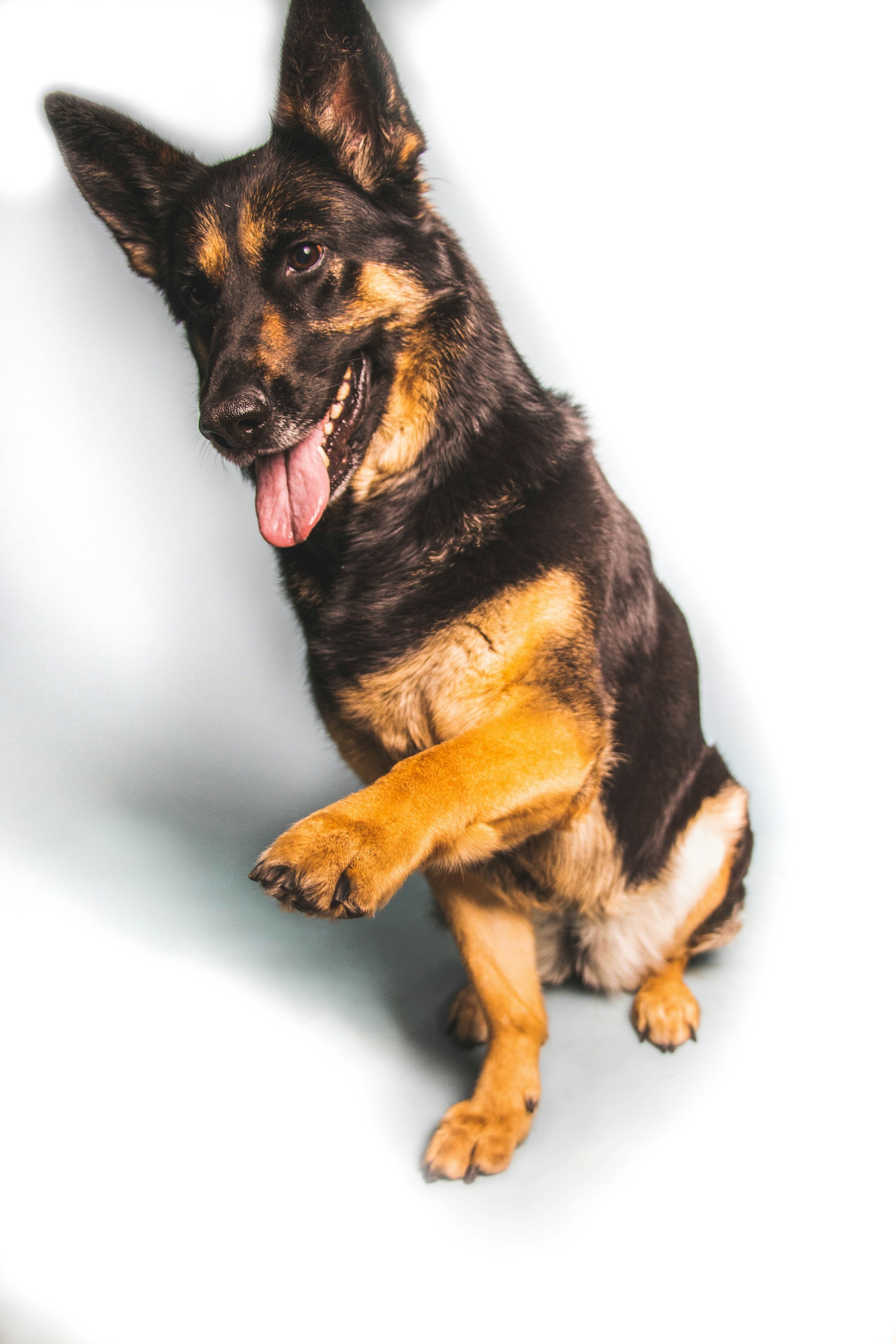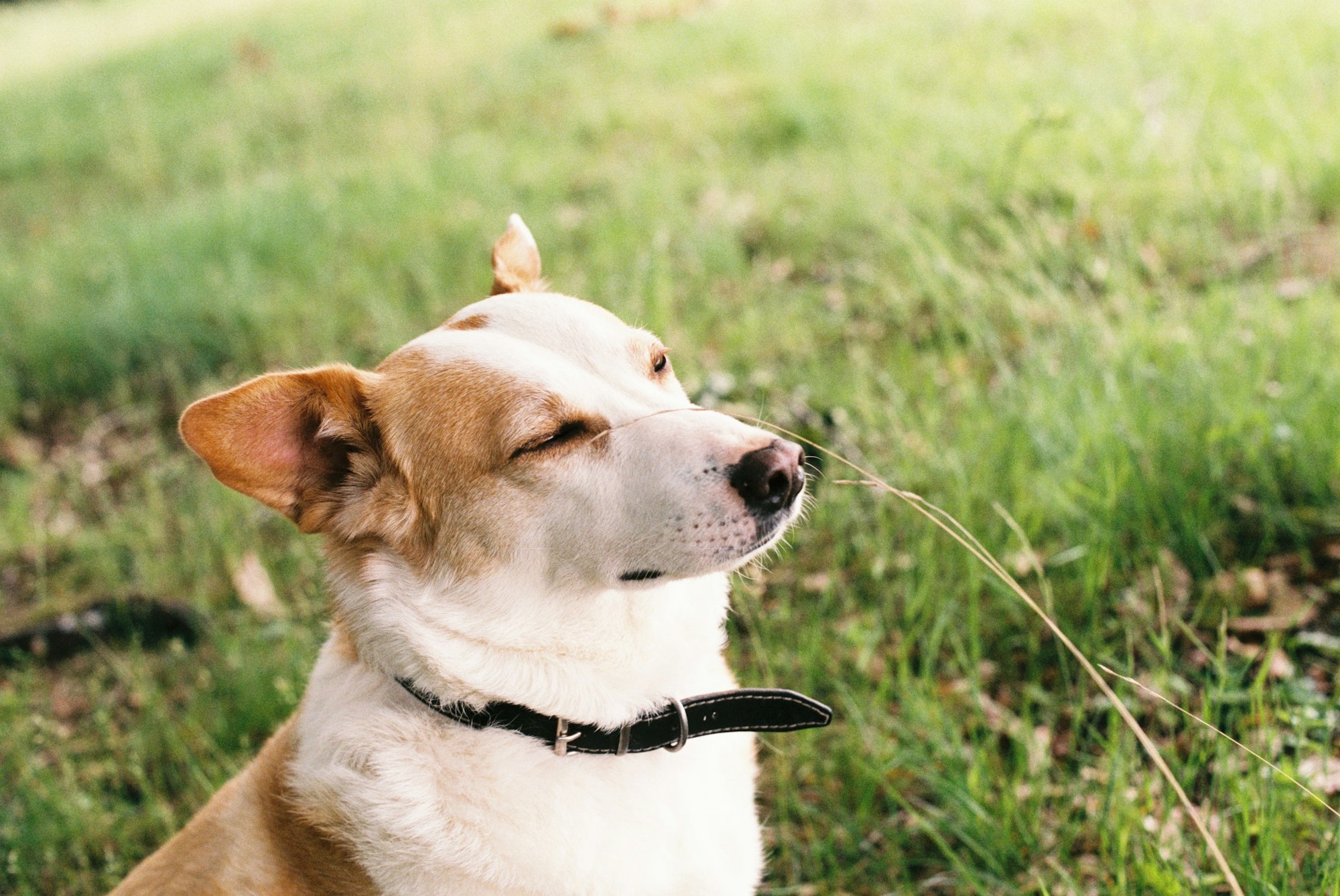Teaching your furry friend new tricks can be a rewarding experience for both you and your dog. One of the most popular tricks to train a dog is how to shake paws, and it's not only adorable but also helps improve their social skills and overall behavior.
Over the past decade, dog training has evolved; today, there are various ways to train a dog to shake. In this step-by-step guide, we will cover the importance of teaching a dog tricks, the benefits of teaching a dog to shake, and an overview of the teaching process, so you can successfully teach your dog to shake paws.
Preparing for the Training Session
Selecting an appropriate environment for training is crucial to ensure your dog remains focused and feels comfortable. Choose a quiet, familiar, distraction-free space with a non-slip surface. This will help your dog understand and follow the commands more effectively.
Gathering necessary supplies
- Treats: Prepare small, easily digestible, and delicious treats to provide positive reinforcement when your dog performs the desired action. This will motivate your dog to learn and associate the command with a reward.
- Clicker (optional): A clicker is a useful tool for dog training that emits a sound when clicked. It can be employed to mark the exact moment your dog performs the desired behavior, which helps the dog understand what is expected of them.
Knowing the best time to train your dog
The ideal time to train your dog is when they are alert, receptive, and not overly excited or tired. Training sessions should be short and engaging, lasting around 10-15 minutes. Try to end each session positively with praise or a treat to reinforce good behavior. You can even end the training session with a game that your dog really enjoys like playing fetch or with a flirt pole.
Step-by-Step Guide to Teach a Dog to Shake
Teaching a dog to shake is a fun and relatively easy trick to teach your furry friend. Here's a step-by-step guide to help you teach your dog how to shake:
Step 1: Introducing the command
The first step in teaching a dog to shake is introducing the command. This step is important because it sets the foundation for the trick and helps the dog understand what is expected of them. Start by getting your dog's attention, then hold your closed hand.
It is important, to begin with a closed hand to avoid confusing your dog with other basic commands, such as "sit" or "stay." Then, say the verbal command "shake" or "paw" in a clear and assertive tone.
Your dog may initially sniff or try to grab the treat in your closed hand. However, waiting until your dog lifts one paw to touch your hand would be best. This natural behavior is a good starting point to teach your dog how to shake hands.
When your dog lifts their paw, immediately reward them with a treat inside your left or right hand, depending on the paw it lifted. You can also give verbal praise such as "Good dog!" to reinforce positive behavior.
Repeat this process consistently until your dog begins to associate the verbal command "shake" with lifting one paw. Encourage your dog to lift its paw higher and consistently paw at your hand before rewarding them with a treat.
As your dog learns the trick, you can gradually transition to an empty hand and eventually move into the sitting position. This step is a great way to start teaching your dog fun tricks while strengthening the bond between you and your furry friend.
Step 2: Guiding your dog's paw
The second step in teaching your dog to shake involves guiding your dog's paw. After your pup has successfully lifted one paw in response to your verbal cue from the previous step, it's time to teach them how to shake. Begin by holding a treat in your hand, with your palm facing up. Show the treat to your dog and let them smell it. Then, close your fist around the treat and extend it towards your dog.
Your dog will likely sniff and paw at your closed fist to get to the treat. In response, gently guide their paw with your other hand until their paw touches your palm. Repeat this several times during your training sessions, using your verbal cue "shake" or "paw" to prompt your dog to lift their paw and guide it towards your palm.
Remember to reward your dog with a treat every time they successfully shake dog paws with you, and don't forget to offer verbal praise as well. With practice and repetition, most dogs can quickly learn how to shake.
It's a fun trick that can strengthen the bond between you and your furry friend, and it's also a great way to introduce your pet to basic dog training. Keep your training sessions short and fun; your dog will be shaking dog paws in no time!
Step 3: Rewarding the correct behavior
The third step in teaching a dog to shake involves rewarding the correct behavior consistently. Dogs are motivated by treats and positive reinforcement, so it's important to reward your dog every time they correctly follow your verbal command and lift its paw to shake. This step reinforces good behavior and helps your dog understand what is expected of them.
Begin by holding a treat in your hand with your palm facing up, and use your verbal cue "shake" or "paw" to prompt your dog to lift their paw. When your dog lifts their paw, reward them with a treat and verbal praise. Make sure to give the treat to your dog with your other hand, not the one that they shook with. This helps avoid confusion and reinforces the behavior you want your dog to repeat.
Repeat this process during your training sessions and gradually phase out the treat until your dog responds consistently to your verbal command alone. It's important to practice regularly and reward your dog every time they correctly shake paws, even if it's just a subtle lift.
Remember always to reward the correct behavior, and avoid punishing or scolding your dog for not getting it right. Most dogs can learn to shake paws with patience and positive reinforcement within a few weeks.
This fun and simple trick has been taught to dogs for over a decade and is a great way to bond with your furry friend. Once your dog learns how to shake, you can build on this behavior and teach them other fun tricks using the same reward-based training method.
Step 4: Adding a verbal cue
Teaching a dog to shake is a fun and rewarding experience for both the dog and its owner. After mastering the initial steps, moving on to Step 4: Adding a verbal cue. This step involves associating a specific word or phrase with the action of shaking paws.
Use the dog sit command during a dog training session to ensure your dog is comfortable. Hold a dog treat in your closed fist and place it near the dog's nose and chest level. As your dog starts to paw at your hand to reach the treat inside naturally, say the verbal cue, such as "shake" or "shake hands."
Using your left hand to guide the dog's paw, gently lift it up and make a shaking hands motion, reinforcing the association between the cue and the action. Over a decade of practice, dogs can learn to consistently paw at your hand upon hearing the verbal cue.
Always end training sessions on a positive note by rewarding your dog with praise, and the dog treats. As your dog shakes their right or front paws, you'll soon have a pet that can confidently shake hands with anyone.
Step 5: Increasing the difficulty
Increasing the difficulty is essential to solidify the behavior of shaking hands and to ensure your dog can perform this trick in various situations. Once your pup consistently paws at your hand and responds to the verbal cue, it's time to challenge them further.
One method to increase difficulty is to hold your hand slightly higher, encouraging your dog to lift its paw higher to reach your hand. This helps to reinforce the shaking motion and teaches your dog to adapt to different hand heights.
Another way to make the task more challenging is to increase your dog's time to hold the shake gradually. Start by holding the paw for just a few seconds and then slowly build up the duration. This will teach your dog patience and help them maintain their position when interacting with friends or strangers.
In addition to this, practice the "shake" command in different environments and situations. Teaching your dog how to shake in various contexts will ensure they can confidently perform the trick whenever asked, whether at home or out in public, making you and your dog proud of their new skill.
Step 6: Practicing consistency and patience
Consistency and patience are key elements for successfully teaching your dog the 'shake' command. Establish a regular and structured training schedule to help your dog form a solid association between the command and the action you desire. Initially, encourage a sitting position, and then extend your empty hand while giving the verbal cue for 'shake.' When your dog consistently offers a paw, reward this behavior with a treat and verbal praise.
As you advance in training, lessen the use of treats, substituting them with affection or verbal accolades. This helps your dog realize that performing the action isn't just about getting a treat. Always keep a calm demeanor during these sessions, as dogs, even down to the subtle movement of their dog jowls, can pick up on your emotions and may become anxious or hesitant if you're frustrated.
Stick to the same verbal cue for the shake command to avoid confusing your pup, and make sure to practice with both paws for well-rounded training. With committed effort and a patient approach, your dog will soon be adept at the 'shake paws' command.
Troubleshooting Common Challenges
Troubleshooting Common Challenges in teaching a dog to shake can be made easier by understanding and addressing specific issues.
1. Dog not lifting their paw: If your dog isn't lifting their paw, try gently tapping or stroking the leg to encourage them. Alternatively, place a treat close to the dog's chest level, enticing them to paw at your hand to reach the reward naturally.
2. Dog using the wrong paw: If your dog consistently offers the wrong paw, you may need to adjust your training approach. Position yourself closer to the desired paw or use a targeting stick to direct your focus towards the correct paw. Remember to reinforce the correct behavior with praise and treats.
3. Dog getting too excited: For dogs that become overly excited during training, establish a calm environment to help them focus. Incorporate short breaks and ensure that the training sessions don't exceed their attention span. Using a gentle, soothing tone while giving the command can also help regulate your dog's excitement levels.
4. Strategies for overcoming challenges: To address common issues, maintain consistency in your training sessions and practice patience. Adapt your training approach based on your dog's unique needs and temperament, and always reinforce positive behavior with praise and rewards.

Frequently Asked Questions
How long does it take to teach a dog to shake hands?
The time it takes to teach a dog to shake hands varies depending on the dog's breed, age, temperament, and previous training experience. On average, it may take a few days to a couple of weeks of consistent training for your dog to understand and reliably perform the shake command.
Can I teach an older dog to shake hands, or is it only effective for puppies?
Yes, you can teach an older dog to shake hands. While puppies might be more adaptable and eager to learn new tricks, older dogs can still learn if given the proper motivation, patience, and consistency in training.
What treats should I use for training my dog to shake?
Use small, bite-sized, and easily digestible treats that your dog enjoys for training. High-value treats such as small pieces of cooked chicken, cheese, or store-bought dog training treats can effectively motivate your dog during training sessions.
How often should I practice the shake command with my dog?
Practice the shake command with your dog at least once or twice a day, in short 5-10 minute sessions. Consistency is key to helping your dog understand and retain the command. Over time, as your dog becomes more proficient, you can reduce the frequency of practice.
Can I teach my dog to shake with both paws?
Yes, you can teach your dog to shake with both paws. Start by teaching them to shake with one paw, and once they've mastered that, introduce the other paw using the same techniques. You can use different verbal cues to help your dog differentiate between shaking with the left or right paw.
Conclusion
Teaching your dog to shake is a rewarding and enjoyable experience that can strengthen the bond between you and your canine companion. By following a step-by-step guide and maintaining consistency, patience, and positivity throughout the process, you will set your dog up for success in learning this engaging trick. Remember to tailor your training approach to your dog's individual needs, monitor their progress, and make adjustments as necessary to ensure they understand the command.
As you continue to work together and celebrate their accomplishments, your dog will become proficient in shaking hands and gain confidence in their ability to learn new skills. So, grab some treats and start practicing with your furry friend, and soon, you'll have a dog that can confidently and enthusiastically shake paws with anyone.
For more helpful articles about pet-parenting tips, check out the Off Leash blog at TryFi.com.
Want to know more about TryFi.com? The Fi Dog Collar is a GPS tracking collar that not only keeps track of your dog’s location, activity levels, and sleep patterns, but it also alerts you if your dog escapes your backyard. This is the fastest way to find your dog after an escape. Try the Fi Dog Collar today!

